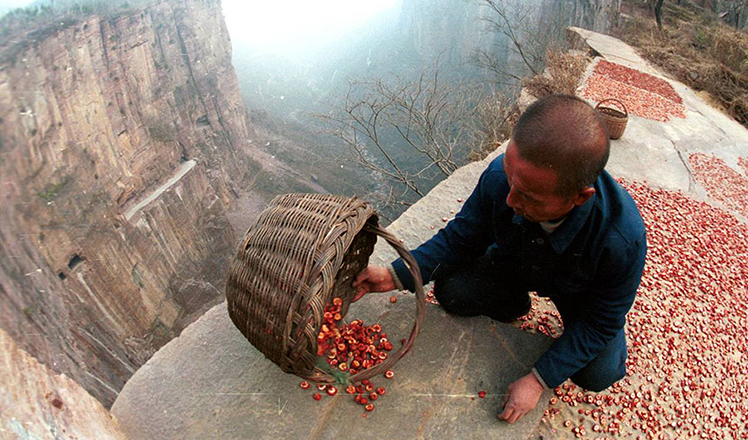Ministry: Poor students getting better nutrition
Updated: 2016-08-31 07:34
By ZHANG ZHIHAO(China Daily)
|
||||||||
 |
|
Students dine in May at Shenyang Railway No 3 Primary School, a model school for student nutrition in Liaoning province. ZHANG WENKUI/XINHUA |
Xinjiang, Tibet regions offer best meals for kids; experts call for more health education nationally
More than 33.6 million students living in poverty have become healthier overall as a result of government subsidized meals, but improved food availability and safety remain top priorities, along with health education, the Ministry of Education said.
Fifteen organizations, including the finance and education ministries, launched a nutrition drive in 2011 to help needy children from first to ninth grade.
Since then, more than 159 billion yuan ($23.7 billion) has been spent on improving meals and dining spaces in 137,000 schools in 29 provinces. The program covers more than 33.6 million students, according to the program's assessment report published on Tuesday.
"We used to only eat what was most abundant in the market, and sometimes our menu wouldn't change for days," said Li Bo, an elementary schoolteacher from Cangxi county, Sichuan province. "Now we have the means to diversify our meals and provide a balanced diet for our children."
The meals consist of locally grown foods that are rich in protein and fiber.
"Thanks to the program, children in rural areas are healthier and happier every day," said He Xiuchao, the director of educational supervision at the Ministry of Education.
However, not every school can implement the plan effectively. An online database of information related to the program, compiled by the Children Center at the China Development Research Foundation, said schools in the Xinjiang Uygur and Tibet autonomous regions in general had the most comprehensive meals, while some schools in Hunan and Gansu provinces could only provide a sausage or a carton of milk.
"Xinjiang and Tibet, which have a large ethnic population, enjoy more subsidies than other provinces, hence the better food," said Du Zhixin, director of the center.
Some schools will buy snacks to replace proper meals, but that generally costs more and adds little nutritional value, Du said. However, most children don't know the harmful effects. More than 66 percent of students spent at least 1 yuan ($0.15) on a snack every day, and close to half consume soft drinks.
Deng Fei, the founder of the Free Lunch Foundation, an organization that provides free meals for rural Chinese students, expressed concern that "apart from food additives, some snacks sold by local stores are counterfeit or even expired, which can be harmful to children".
Besides strengthening education effort, Deng suggested that government and schools should focus on improving the quantity and quality of meals.
"Food availability shouldn't be a problem," he said. "Schools can buy food from local residents. This not only helps alleviate poverty in the community but also ensures a sustainable source."
Further, schools need to have the authority to negotiate deals and be transparent in the process, Deng said.
- From guns to books: Teenager of 'last gunman tribe' goes to university
- Ministry: Poor students getting better nutrition
- Designer explains his glass 'bridge of love'
- Scooters banned from roads in Beijing, Shanghai
- Match makers' market draws desperate parents
- China has 91 major water projects under construction
- Record number of Americans dislike Hillary Clinton: poll
- Mexico contradicts Trump on paying for border wall, clouding visit
- First direct commercial flight from US in over 50 years arrives in Cuba
- Typhoon kills 9 in Japan's old people's home as toll hits 11
- Brazil leader's impeachment trial enters final stretch
- 94th anniv. of Victory Day marked in Turkey

 Korean ethnic dance drama shines in Beijing
Korean ethnic dance drama shines in Beijing
 Children explore science and technology at museum
Children explore science and technology at museum
 Children wearing Hanfu attend writing ceremony
Children wearing Hanfu attend writing ceremony
 73rd Venice Film Festival opens in Italy
73rd Venice Film Festival opens in Italy
 'World's most dangerous village' draws visitors
'World's most dangerous village' draws visitors
 Chinese female pilots fly fighter-bomber JH-7
Chinese female pilots fly fighter-bomber JH-7
 African trainees learn lion dance in NE China's Dalian
African trainees learn lion dance in NE China's Dalian
 Left-behind children back to hometown after spending summer with family
Left-behind children back to hometown after spending summer with family
Most Viewed
Editor's Picks

|

|

|

|

|

|
Today's Top News
Trump outlines anti-terror plan, proposing extreme vetting for immigrants
Phelps puts spotlight on cupping
US launches airstrikes against IS targets in Libya's Sirte
Ministry slams US-Korean THAAD deployment
Two police officers shot at protest in Dallas
Abe's blame game reveals his policies failing to get results
Ending wildlife trafficking must be policy priority in Asia
Effects of supply-side reform take time to be seen
US Weekly

|

|







